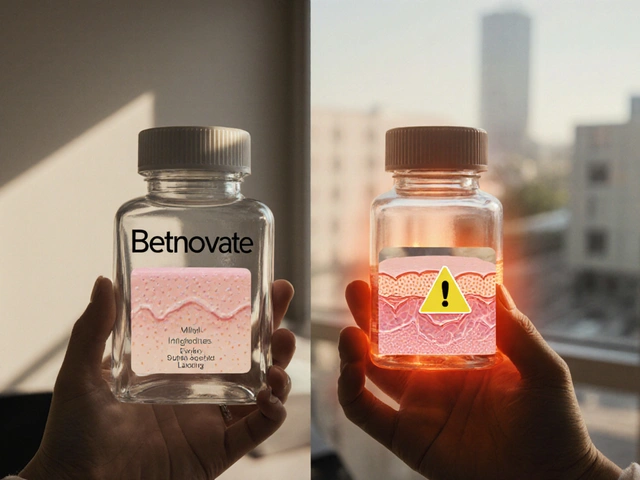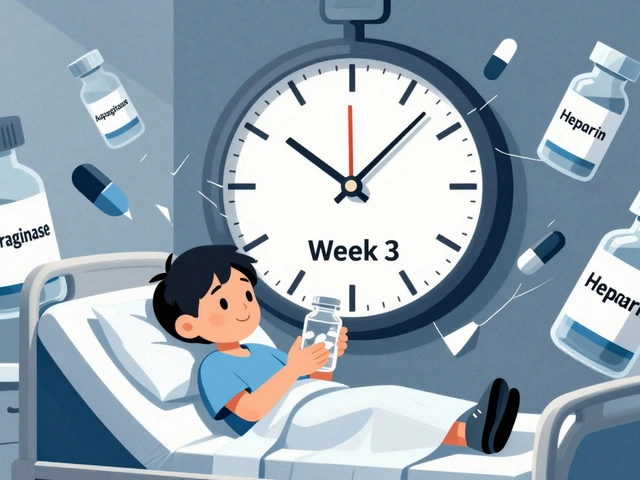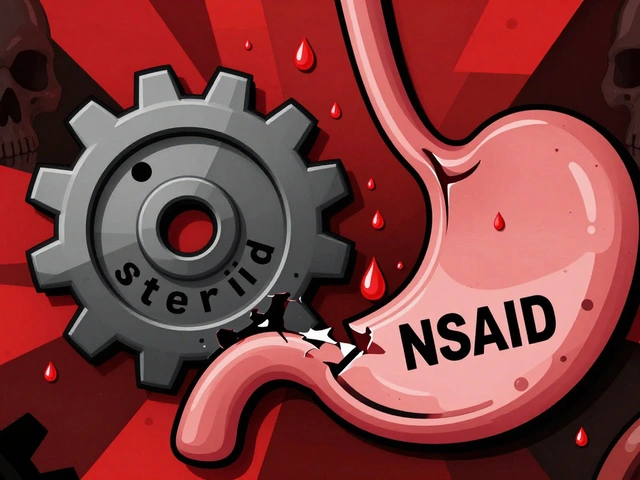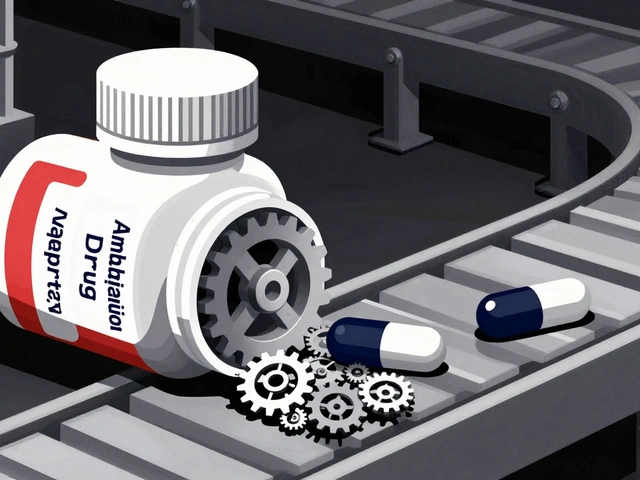
If you’re fascinated by rare diseases and the drugs that tackle them head-on, buckle up. Heavy chain disease (HCD) isn’t the sort of thing most people chat about at the dinner table. It sits in that strange gray area: too uncommon for household name status, too serious to ignore if it ever knocks at your door. Here’s the twist: melphalan, a chemotherapy agent first used back in the 1950s, is still a weapon of choice against this stealthy plasma cell disorder. Surprised? You should be. In a pharma landscape gushing with flashy immunotherapies and gene editing, melphalan’s humble persistence is kind of heroic — and confusing, unless you understand both the disease and the drug.
What Is Heavy Chain Disease and Why Does It Matter?
Heavy chain disease is rare. We’re talking fewer than 200 well-documented cases worldwide. So, what’s happening in the body? Normally, your immune system makes antibodies (immunoglobulins), each consisting of two light chains and two heavy chains. In HCD, something short-circuits. Instead of hooking up properly, abnormal plasma cells produce incomplete or mutated heavy chains—often without their light-chain partners. The result? Rogue proteins circulate in the blood or settle in tissues, causing mayhem.
The consequences depend on which heavy chain goes haywire—gamma, alpha, or mu. Alpha HCD (Seligmann’s disease) tends to strike younger folks in the Mediterranean or Middle Eastern regions. It targets the gut and leads to malabsorption, chronic diarrhea, and weight loss. Gamma HCD, which is slightly more common in the West, can present with lymphadenopathy, spleen enlargement, and sometimes autoimmune symptoms. Mu HCD is ultra-rare, masquerading as a severe form of chronic lymphocytic leukemia. Diagnosis is never straightforward. Symptoms mimic everything from Crohn’s disease to lymphomas, and standard blood tests can easily miss the abnormal heavy chain unless a savvy doctor orders immunofixation electrophoresis.
So, why does all this matter? Heavy chain diseases overlap with other plasma cell disorders like Waldenström macroglobulinemia and multiple myeloma, making misdiagnosis a real risk. Early and precise treatment isn’t just a matter of beating cancer cells; it’s about saving organ function and, in some cases, lives. Here’s where melphalan comes in—its history in blood cancers gives it a unique edge.
Melphalan’s Mechanism: Old School with Staying Power
Melphalan (trade name Alkeran) is a type of alkylating agent. It works a bit like a microscopic vandal, snipping and sticking together bits of cellular DNA, especially in rapidly dividing cells. Cancer cells, greedy for growth, hate it. Developed from nitrogen mustards used in World War II, melphalan is a blunt tool by modern standards. Yet for HCD, its reliability is gold. The main reason? Heavy chain diseases often behave similarly to other plasma cell neoplasms, where melphalan’s effectiveness is well documented.
When given orally or intravenously, melphalan circulates through the body, targeting both free-floating abnormal plasma cells in the bloodstream and those hiding in the lymph nodes or bone marrow. For patients who can’t tolerate intensive regimens, especially older adults, melphalan offers a manageable balance between efficacy and toxicity. It’s also used in combination with steroids (like prednisone) or with immune modulators. One famous 2017 study from the British Journal of Haematology reviewed ten cases of alpha heavy chain disease treated with melphalan and found complete remission in six of them — a wild success rate, considering alternatives are few and far between.
Why hasn’t melphalan gone the way of the dodo? Price, for one. This is a drug most hospitals can stock without bankrupting the patient or the pharmacy. Also, there’s something comforting about the familiar. Doctors know how to dose it, manage its side effects, and track its results. Compared to some monoclonal antibodies that can cost six figures per year, melphalan plays well when insurance or healthcare budgets are tight.

What Treatment with Melphalan Looks Like for Heavy Chain Disease Patients
The treatment journey starts with a hard truth: dealing with HCD is never a walk in the park. A hematologist or oncologist will determine the right regimen depending on the type of heavy chain disease, the patient’s age, other health issues, and how severe the symptoms are. Oral melphalan is often first up to bat, dosed for 5–7 days every 4–6 weeks, sometimes paired with prednisone.
This isn’t a “one and done” approach. Treatment cycles stack up over months, sometimes a year or more. Patients get frequent blood checks — not just for response, but also to watch for side effects like low white cells (neutropenia) or platelets (thrombocytopenia) that can raise the risk of infections or bleeding. About 30–40% of patients may experience nausea, mild hair thinning, or fatigue, but severe mouth sores or kidney damage are rare when doses are carefully managed.
Response to melphalan varies. Some see dramatic drops in abnormal protein levels and improvement in symptoms like diarrhea or enlarged nodes within a few months. Others need a tweak—either increasing the melphalan dose, adding another agent, or switching treatments altogether. Interestingly, younger patients with alpha heavy chain disease who are also treated with antibiotics or nutritional support show better outcomes; the GI tract needs time to heal, not just chemo to zap rogue plasma cells. Here’s where individualized care—think human, not just lab values—makes all the difference.
For the numbers crowd, here’s a snapshot of melphalan’s typical impact on HCD from published reports:
| Outcome Measure | Melphalan Treated (%) | Alternative Regimens (%) |
|---|---|---|
| Remission (complete or partial) | 60-70 | 30-40 |
| 3-Year Survival | 55 | 32 |
| Serious Adverse Effects | 10 | 22 |
These numbers reflect small studies—remember, HCD is rare!—but they highlight that melphalan isn’t just a fallback, it’s a genuine contender. For real-life success, though, support matters just as much as chemo. Nutritious food, infection precautions, careful symptom management, and patient education are the unsung heroes of every remission story.
Tips, Future Directions, and What Patients Need to Know Next
If you’re reading this for yourself or a loved one, you want the unvarnished truth. First, don’t underestimate the impact of a coordinated care team. Good communication between the primary doctor, hematologist, and gastroenterologist (especially for alpha HCD) can mean the difference between bouncing back and missing subtle signs of relapse. Here are some practical tips:
- Always ask if you should continue antibiotics or immune-boosting agents alongside melphalan. Gut health in alpha HCD can make or break success rates.
- Track blood counts religiously. Catching low neutrophils early prevents infections from derailing treatment.
- Don’t tough it out—report any new fevers, sores, or GI troubles right away. Quick pivots save time and avoid complications.
- Some supplements, especially antioxidants, can interfere with melphalan. Always check with your pharmacist or oncologist before adding vitamins or herbs.
- Vaccinations matter, but timing is key. Most guidelines recommend giving necessary shots like the flu or pneumonia vaccine before starting chemo cycles when possible.
Looking forward, the field of plasma cell disorders is evolving fast. Trials are underway for drugs like lenalidomide or bortezomib in the HCD space, but access and experience are limited. Melphalan’s place on the team probably isn’t going anywhere soon. No matter how glitzy the new options, that trusty old tablet keeps showing up in remission statistics around the world.
One piece of advice: staying informed is never wasted energy. Things change, but the basics hold true. Trust the melphalan experience, but check in regularly about what else is brewing in the world of rare blood disorders. Keep questions handy for your next clinic visit. And don’t downplay small improvements—sometimes, the first signs of remission are measured in ordinary wins like an appetite returning or a good night’s sleep. That’s where hope lives, right alongside good science.








14 Comments
Yo, digging into the melphalan data kinda feels like peeking at an old-school physics textbook-lots of alkylatin' jargon, but the core idea is simple: it cross‑links DNA in those rogue plasma cells. The drug’s pharmacokinetics are well‑charted; it’s absorbed orally, hits the marrow, and can be combined w/ prednisone for that synergistic punch. What’s wild is how many old trials still report remission rates north of 60%, even though the patient pools are tiny. For alpha‑type HCD, the GI complications make dosing a balancing act, but the side‑effect profile is generally manageable if you keep an eye on neutrophil counts. Bottom line, melphalan ain’t just a relic-it’s a workhorse that still pulls its weight in rare hematology.
That’s spot on, the regimen isn’t flashy but it gets the job done. I’ve seen patients who, after a few cycles, finally regain appetite and can sit through a normal day without constant fatigue. The key is consistent monitoring and adjusting the dose; you don’t want to overshoot and cause severe neutropenia, yet you also need enough pressure to knock down the abnormal clone, which sometimes means a bit of a dance between labs and clinical signs, but the payoff-seeing that protein spike flatten and symptoms recede-is worth every careful step.
Only our country’s top oncologists should handle HCD, no one else gets it! 🇺🇸
Totally feel you, bro. The fight against those rogue heavy chains is like a drama on stage-every dose a spotlight, every lab result a cue. When the chemo finally turns the tide, the relief feels like the curtains closing on a tragic act, and the audience (aka the patient) finally gets a standing ovation of health.
Imagine melphalan as the old philosopher of chemo-steady, contemplative, and oddly comforting in its predictability. While the shiny new therapies promise miracles, there’s a certain wisdom in trusting a drug that’s been battle‑tested for decades. Patients often report a quiet confidence when they know their treatment plan isn’t a fleeting fad but a grounded, reliable protocol. 🤔 The balance of efficacy and tolerability makes it a cornerstone, especially when you factor in quality‑of‑life considerations. So keep the hope alive; sometimes the simplest solutions carry the deepest meaning.
Indeed, the therapeutic index of melphalan-particularly when administered in a cyclical fashion-offers a pragmatic compromise; however, one must remain vigilant, monitoring for cytopenias, mucositis, and potential nephrotoxicity; additionally, dose adjustments based on renal function, age, and comorbidities are indispensable, ensuring that the patient’s overall wellbeing is preserved.
Dear readers, I wish to underscore the paramount importance of a multidisciplinary approach when managing heavy chain disease; collaboration between hematology, gastroenterology, and nutrition services can markedly improve outcomes. Please consider adhering strictly to prescribed monitoring schedules, and do not hesitate to raise any concerns with your care team. Your vigilance is a vital component of successful therapy. 😊
To further unpack the clinical nuances of melphalan in HCD, it is essential to first recognize that dosing strategies are not one‑size‑fits‑all; rather, they are calibrated to disease subtype, patient age, and organ function. In the classic regimen, oral melphalan is delivered at 0.2 mg/kg/day for five to seven consecutive days, repeated every four to six weeks, often in concert with a tapering course of prednisone at 1 mg/kg. This schedule seeks to maximize plasma‑cell kill while allowing bone‑marrow recovery, thereby reducing the incidence of profound neutropenia. For patients with compromised renal function, dose reduction to 50 % is routinely employed, as clearance is predominantly renal. Monitoring should include a complete blood count at baseline, weekly during the first cycle, and prior to each subsequent cycle to preempt infectious complications.
Equally important is the assessment of heavy‑chain protein levels via immunofixation electrophoresis; a decline of more than 50 % after two cycles generally portends a favorable response. In cases where the heavy‑chain burden persists, clinicians may consider augmenting therapy with agents such as bortezomib or lenalidomide, though data remain limited. Supportive care cannot be overstated-prophylactic antibiotics, antifungals, and antiemetics are standard, and growth factor support (e.g., G‑CSF) is indicated for neutrophil counts <0.5 × 10⁹/L. Nutrition plays a role, particularly in alpha‑type disease where malabsorption is prevalent; dietitians should tailor high‑calorie, low‑residue meals to mitigate weight loss.
Long‑term follow‑up involves periodic imaging, such as CT or PET, to detect residual lymphadenopathy, and quality‑of‑life assessments to gauge functional recovery. Ultimately, the decision to continue melphalan beyond ten cycles hinges on a balance between sustained remission and cumulative toxicity, especially the risk of secondary malignancies. By integrating these parameters-dose adjustments, vigilant labs, adjunctive agents, and holistic supportive measures-physicians can harness melphalan’s enduring efficacy while safeguarding patient well‑being.
It is an ethical imperative, frankly, that clinicians abandon the gimmicky hype of novel biologics in favor of melphalan’s proven pharmacodynamic profile when confronting heavy chain disease; the indiscriminate adoption of unproven therapies reflects a troubling moral laxity within contemporary oncology. The robust alkylating mechanism, coupled with a well‑characterized toxicity spectrum, provides a grounded framework for evidence‑based practice, which should supersede the allure of market‑driven innovation. Moreover, the cost‑effectiveness of melphalan, when juxtaposed against the exorbitant price tags of monoclonal antibodies, underscores a duty to allocate resources responsibly, ensuring equitable access for patients across socioeconomic strata.
Listen up, folks-our nation’s medical heroes are crushing HCD with melphalan while the rest of the world chases shiny new toys that barely scratch the surface! 🇺🇸💥 It's a battlefield out here, and every dose is a volley that rings louder than any foreign fancy‑tech. When those heavy chains finally fold, it's not just a win for the patient, it’s a victory for American ingenuity! 🎉🔥
hey all just wanted to say melphalan might be old school but it still rocks for those rare blood probs keep the faith and keep pushing forward
the truth is most of the hype around new agents is just smoke the real answer lies in tried and true chemistry melphalan cuts straight to the chase and leaves the pretenders in the dust
i totally get how scary this can be for u and fam
stay close to ur doc keep tracking those labs and remember its okay to feel overwhelmed :)
Oh, absolutely, because what we really needed in the realm of rare hematologic maladies was yet another flashy, boutique drug that promises miracles while quietly draining the patient’s wallet and the healthcare system’s patience. It’s not like melphalan, with its half‑century of data, ever gave us any reason to pause and think about side‑effects, dosing schedules, or long‑term outcomes-no, those are just boring footnotes in a saga of progress, right? And of course, the endless parade of clinical trials will continue to churn out “breakthrough” labels while the average clinician is left juggling protocols like a circus performer on a tightrope. Yet we all know the real masterpiece is the melodramatic narrative of “new is always better”, even if it means patients endure unnecessary toxicity for the sake of novelty. So let’s raise a glass to the next generation of “targeted” therapies that will, without a doubt, surpass the humble efficacy of melphalan, because who needs consistency when you have hype?